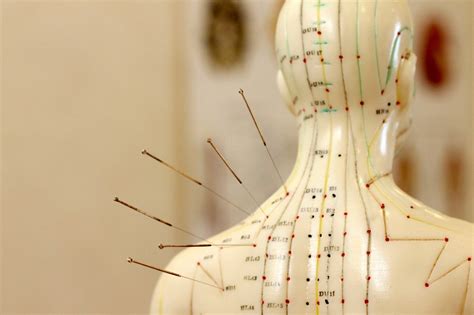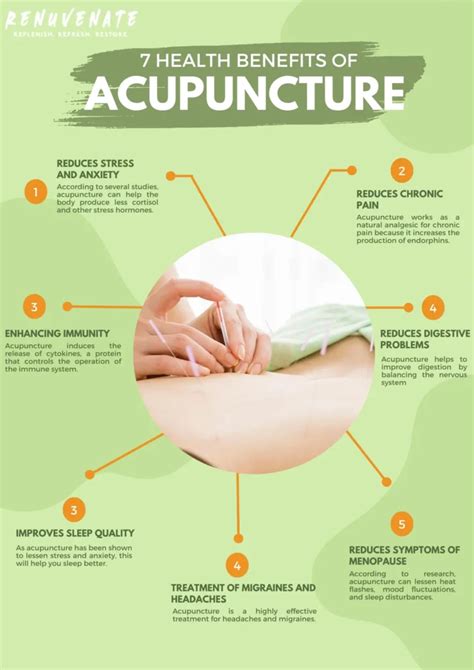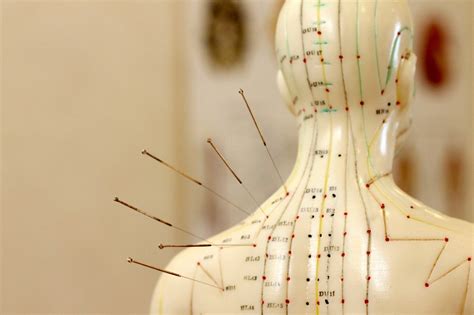Intro
Discover the ancient practice of Acupuncture, a holistic healing technique using needles to stimulate Qi, relieving pain, stress, and anxiety, promoting wellness and balance through Traditional Chinese Medicine.
Acupuncture has been a cornerstone of traditional Chinese medicine for thousands of years, offering a holistic approach to health and wellness. This ancient practice has garnered significant attention worldwide for its potential to treat a wide range of health conditions, from chronic pain and migraines to infertility and mental health issues. The concept of acupuncture is rooted in the belief that the body has a vital energy, known as "qi," which flows through specific pathways, or meridians. By inserting fine needles into specific points along these meridians, practitioners aim to restore the balance of qi, thereby promoting healing and overall well-being.
The importance of understanding acupuncture lies in its potential to provide an alternative or complementary approach to conventional medical treatments. Many individuals seek acupuncture as a way to manage symptoms that have not responded well to traditional therapies, or as a means to avoid the side effects associated with certain medications. Moreover, acupuncture's focus on treating the individual as a whole, rather than just the symptoms of a disease, resonates with those seeking a more holistic approach to health.
As interest in acupuncture continues to grow, so does the body of research aimed at understanding its mechanisms and efficacy. Studies have shown that acupuncture can stimulate the release of various neurotransmitters and hormones, influencing the body's pain perception, mood, and other physiological processes. This complex interplay suggests that acupuncture's effects are not merely placebo but are rooted in tangible biological responses. Whether you're a skeptic, a believer, or simply curious, delving into the world of acupuncture offers a fascinating glimpse into the intersection of traditional practices and modern science.
Introduction to Acupuncture

Acupuncture is one of the oldest practices in the history of medicine, with roots tracing back over 2,500 years to ancient China. The practice involves the insertion of very thin needles through the skin at strategic points on the body. It is most commonly used to treat pain, although it is also used for a wide range of other health conditions. The theory behind acupuncture is that the insertion of needles into these points corrects imbalances in the flow of "qi" (or "chi"), a type of vital energy that flows through the body along pathways known as meridians.
How Acupuncture Works
Acupuncture's working mechanism is multifaceted and involves the stimulation of nerves, muscles, and connective tissue. This stimulation boosts the body's natural painkillers and increases blood flow, which may stimulate healing. The needles used are so thin that they cause minimal discomfort, and the process is generally considered safe when performed by a licensed practitioner.Benefits of Acupuncture

The benefits of acupuncture are diverse and have been recognized by various health organizations worldwide. Some of the key benefits include:
- Pain Relief: Acupuncture is perhaps best known for its ability to relieve pain. It has been used to treat a variety of pain conditions, from migraines and arthritis to lower back pain.
- Mental Health: There is growing evidence that acupuncture can help with mental health issues, including depression and anxiety, by influencing mood-regulating neurotransmitters.
- Improved Sleep: Many people find that acupuncture helps them sleep better, which is crucial for overall health and recovery.
- Addiction Recovery: Acupuncture has been used as part of treatment programs for addiction, helping to reduce withdrawal symptoms and cravings.
Practical Applications of Acupuncture
In practice, acupuncture is applied in various settings, from private clinics to hospitals. Sessions typically begin with a consultation, where the practitioner assesses the patient's condition and determines the appropriate treatment points. The needles are then inserted and left in place for 15 to 30 minutes, during which time the patient may experience a sensation of warmth or heaviness at the needle site. After the treatment, patients often report feeling relaxed and may notice improvements in their symptoms over the following days.Steps to Receive Acupuncture

Receiving acupuncture involves several steps:
- Find a Licensed Practitioner: It's crucial to find a practitioner who is licensed and experienced. Ask for referrals or check with professional acupuncture organizations for recommendations.
- Initial Consultation: The first visit usually involves a comprehensive health history and physical exam to determine the best course of treatment.
- Treatment Sessions: Sessions can vary in length but typically last about an hour. The frequency of visits depends on the condition being treated.
- Follow-Up: After the initial treatment, follow-up sessions are scheduled to monitor progress and adjust the treatment plan as necessary.
Common Misconceptions About Acupuncture
Despite its growing popularity, acupuncture is surrounded by several misconceptions. One common myth is that acupuncture is painful, which is not typically the case due to the fine nature of the needles used. Another misconception is that acupuncture is only used for pain relief, when in fact, it is applied to treat a wide range of health issues. Understanding and addressing these misconceptions can help individuals make informed decisions about whether acupuncture might be beneficial for them.Acupuncture and Modern Medicine

The integration of acupuncture into modern healthcare systems is a subject of ongoing discussion. While some view it as an alternative to conventional treatments, others see it as a complementary therapy that can be used alongside traditional medical practices. The National Institutes of Health (NIH) and other reputable health organizations have funded research into acupuncture's effects and efficacy, marking a significant step towards its recognition within the mainstream medical community.
Future Directions for Acupuncture Research
Future research directions for acupuncture include larger-scale clinical trials to further establish its efficacy for various health conditions. Additionally, there is a need for more studies on the biological mechanisms underlying acupuncture's effects, which could lead to the development of new treatments based on its principles. As the medical community continues to explore the potential of acupuncture, it is likely that its applications and recognition will expand.Conclusion and Next Steps

In conclusion, acupuncture represents a fascinating blend of traditional knowledge and modern medical inquiry. As we continue to unravel its mysteries and benefits, it's essential for individuals to approach acupuncture with an open mind, recognizing both its potential and its limitations. For those considering acupuncture, the first step is often the most challenging—seeking out information and deciding whether to try it. By understanding the principles, benefits, and applications of acupuncture, individuals can make informed decisions about their health and explore new avenues for wellness.
A Final Note on Exploring Acupuncture
Exploring acupuncture, whether out of curiosity or as a treatment option, is a personal journey that requires patience, an open mind, and a willingness to understand its unique approach to health. As with any health decision, it's crucial to consult with a healthcare provider before starting acupuncture treatments, especially for those with underlying medical conditions or concerns. By doing so, individuals can ensure that they are making the best choices for their well-being and can fully appreciate the potential benefits that acupuncture has to offer.What is the main principle behind acupuncture?
+Acupuncture is based on the principle of restoring the balance of "qi" (or "chi"), a vital energy that flows through the body along specific pathways called meridians.
Is acupuncture painful?
+Acupuncture is not typically considered painful. The needles used are very fine, and most people experience minimal discomfort during the procedure.
What conditions can acupuncture treat?
+Acupuncture can be used to treat a wide range of health conditions, including chronic pain, migraines, depression, anxiety, and infertility, among others.
We invite you to share your thoughts and experiences with acupuncture. Whether you're a seasoned practitioner or just starting to explore its benefits, your insights can help others navigate this ancient yet innovative approach to health and wellness. Share this article with those who might be interested, and let's continue the conversation on the potential of acupuncture to transform our understanding of medicine and our approach to personal health.
